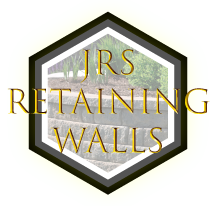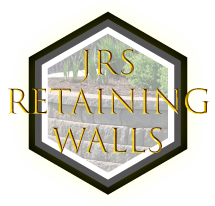Professional service
JRs Retaining Walls in Anaheim is a professional retaining wall contractor in [City], [State]. We have years of experience designing and building beautiful walls for residential and commercial spaces. We pride ourselves on making structurally sound yet aesthetically pleasing designs that fit your needs. Retaining walls can be customized to include different materials for the best aesthetic property. Our experienced staff will help you in deciding what kind of retaining wall material is right for your home.
Here are some of the different styles of retaining walls we offer.
Sheet Piling Retaining Wall
A retaining wall can be made using sheet piling. With this type of design, you simply put a thin steel piece into the soil and it will create your own wall. Sheet piling is often used in tight spaces where you have less room for more traditional construction styles or you need to offset the pressure on top of your walls from above ground. It is also typically one way to build a retaining wall if there isn’t much soil present for building materials. Sheet pile retaining walls only work in softer soils, as you need the wall if driven a third of its height into the ground. If push comes to shove, we will add an anchoring system for extra strength.
Natural Stone Retaining Walls
Natural stone retaining walls can be a very cost effective way to make a retaining wall, as it is often much cheaper than other methods and materials.
To build this type of retaining wall you need stones in various sizes laid out on the ground with their longest side facing down. Then they are built up one layer at a time using smaller stones for support behind larger rocks to prevent them from falling over during construction or later.
Cantilever Retaining Wall
Cantilever retaining walls are often constructed out of reinforced concrete, and use the principle of leverage to hold the pressure of the dirt. The basic principle is a piece of concrete which is in an L shape, with the base pointed toward the earth and dirt that’s being retained. Retaining walls work by transferring the pressure from a vertical slab to a base, which takes the weight of subsurface dirt. The vertical pressure is easy for the base surface to bear since it only has to stay firm against the horizontal pressure pushing outward.
Anchored Retaining Walls
Anchored retaining walls are supported by cables. The anchors wedged in the ground and reinforced with concrete or other mechanical pressures can be used in cases where strong earth pressure warrants additional strength from the wall. Any type of retaining wall can be anchored.
Residential Retaining Walls
Retaining walls can be used to block off a garden or yard for privacy purposes, and if the retaining wall is at least two feet high it also provides security by blocking unwanted onlookers from seeing into your property. Retaining walls that are installed on an incline are called sloped retaining walls; these types of retaining walls will not need anchoring as long as there is adequate earth pressure behind them. Slope retainment walls should always use breakaway joints in order to prevent any erosion over time due to weathering effects..
Materials Needed:
– Concrete blocks (for drainage) – Metal mesh fabric reinforcement (to hold back dirt from stone surface) – Stone enclosure caps/ends (optional)
Benefits of Natural Stone Retaining Walls:
– They last virtually forever due to the strength and durability of natural stone giving your home an element that will never go out of style.
Gravity Retaining Walls
Gravity retaining walls use the weight of materials to hold soil in place. Pavers, natural stones, bricks are all commonly used in retaining walls. If you have a shorter wall, additional reinforcement may not necessary. But taller gravity retaining walls require foundations of various sorts and needs on-site concrete footings depending on dirt pressure.


